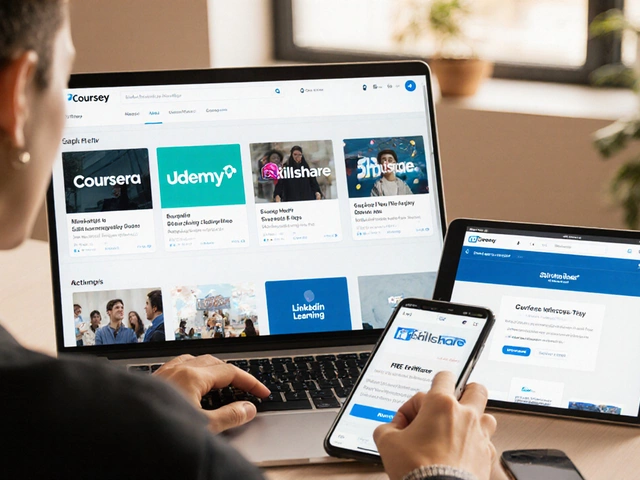Jumping into teaching English to adults who are starting from scratch? It's like being on an adventure, where patience and creativity are your best pals. Unlike kids, adults bring a whole lifetime of experiences to the table, so tap into that. First off, understand that adults often juggle work, family, and all sorts of responsibilities. They aren’t just learning English for fun; there’s usually a solid reason behind it.
Creating a space where they're comfortable is essential. Picture this: a relaxed, welcoming environment works wonders in melting the worries of being judged or making mistakes. Encourage questions and repeat important points without making anyone feel awkward. Let them know it’s perfectly fine to stumble while speaking; it’s all part of the learning curve.
- Understanding Adult Learners
- Creating a Comfortable Environment
- Using Real-Life Situations
- Incorporating Technology
- Keeping It Interactive and Fun
Understanding Adult Learners
Teaching English to adults means understanding a whole new ball game. Unlike kids who are often soaking up new words like thirsty sponges, adult learners are typically balancing learning with jobs, families, and other commitments. It's vital to recognize that their motivation might come from needing English for work, travel, or even personal growth.
Adults tend to be more self-directed, which is a fancy way of saying they like to have a say in their learning journey. They often favor practical, real-life scenarios over theoretical exercises. So, instead of drilling random vocabulary, try to link new words to situations they're likely to encounter—like ordering food at a restaurant or having a small talk at work.
Another thing to keep in mind is that adults bring a lot of life experience to the table. This makes them great at drawing connections between their native language and English. Tapping into this skill can be a huge help. Encourage them to use what they already know as a stepping stone.
There are also some fascinating stats about adult learners. For example, research shows that adults often need more explicit grammar instruction compared to kids. They appreciate understanding the rules and logic behind the language structure.
| Aspect | Adult Learners |
|---|---|
| Learning Style | Self-directed; practical applications preferred |
| Experience | Use life experience to relate to new concepts |
| Motivation | Often job or goal-oriented |
| Grammar Learning | Benefit from understanding rules and structures |
So when you're teaching English to adults, remember they bring a unique set of needs and skills to the game. Tailor your approach to match their lifestyle and reasons for learning, and you're much more likely to see them thrive.
Creating a Comfortable Environment
When you're teaching adult beginners, creating a comfy atmosphere is like setting the stage for success. Adults often carry the weight of their previous learning experiences, and many might have had a tough time with languages in school. So, it's key to make them feel at ease from day one.
Start by establishing a no-judgment zone. Mistakes are learning opportunities, not failures. Show enthusiasm for their progress, no matter how small. Positive reinforcement goes a long way in boosting confidence.
Arrange the physical space to feel less like a classroom and more like a group hangout. Use circular seating or small groups that encourage peer interactions. This setup helps shy folks speak up and makes discussions inclusive.
Consider the power of breaks. A short pause every 30 or 40 minutes can refresh the room's energy. Encourage learners to chat casually in English during these breaks; it's practice without the pressure.
Finally, remember that everyone learns differently. Some prefer listening, others reading or speaking. Ask what works best for each person and try to tweak activities accordingly. It shows you care about their individual journey, not just the group dynamic.

Using Real-Life Situations
Teaching English to adult beginners can be a whole lot smoother when you bring in real-life scenarios. It’s like showing them a map instead of just giving them a compass. Start by focusing on practical conversations they might encounter every day. Think grocery shopping, ordering at a restaurant, or even small talk at work.
One effective way is role-playing. Create scenarios where students act out common interactions. For example, one might be a customer and another a cashier. This builds confidence and really cements these language skills. And don’t worry if things get a little chaotic—that's just learning in action!
Another approach is using multimedia—videos, podcasts, even TV shows. Choose content that's simple yet engaging. Watching a scene and then discussing it can help students pick up spoken English nuances. Plus, it's fun! Encourage them to describe what they've watched, or even mimic the conversations.
Why not incorporate some simple technology too? Apps like Duolingo or Rosetta Stone make learning practical phrases easier. Combine these with assignments such as finding directions using English map apps or narrating a day’s routine in English, and see how it helps boost their learning curve.
Real-life situations also offer an opportunity to learn culture. Teaching greetings and polite expressions is as important as grammar and vocabulary. This way, they're not just learning words, they're learning how to fit them into everyday life, making their English more functional and less textbooky.
Incorporating Technology
Let's face it; technology is everywhere these days, and it can be a real game-changer when you're teaching English to adult beginners. Start by leveraging smartphones and tablets, which most learners already have. Simple apps like Duolingo or Memrise are fantastic for vocabulary building. These apps turn learning into a game, which is a great way to keep motivation high.
Another handy tool in your tech arsenal is video conferencing platforms, like Zoom or Microsoft Teams. It's not just about having a class; these platforms have features that let you share screens and documents, or even play engaging language games. Imagine the convenience for adults who might find it hard to commute to a physical class location.
Don’t forget podcasts. They’re gold mines for teaching pronunciation and listening skills. Encourage your students to listen to English podcasts as part of their daily routine—while they're commuting or cooking. It’s like giving them learning wings to fly with on their own time.
Then there's social media. Use platforms like Facebook or Instagram to set up private groups where students can share their progress, ask questions, and post in English. This social aspect makes learning feel less like a solitary task and more like a community adventure.
Lastly, if you're into showing some data, here's a quick look at how integrating tech makes a difference:
| Traditional Methods | With Technology |
|---|---|
| Only notes and textbooks | Access to interactive apps |
| Physical classrooms only | Flexible online classes |
| Limited speaking practice | Endless speaking apps and podcasts |
Incorporating technology into your teaching structure not only makes learning English more fun but also helps adult learners fit language practice into their often busy lives.

Keeping It Interactive and Fun
We've all been there—droning through a class that's about as thrilling as watching paint dry. For adult beginners, keeping the English course engaging isn’t just a bonus; it's essential. When you crank up the fun, people tend to remember things better and are more likely to stick with it.
Games aren’t just for kids. Incorporating games in your lessons is a smart move. How about a word scavenger hunt or a friendly round of Scrabble? These can make learning feel less like a chore and more like a dinner party with friends. Plus, when adults are having a laugh, they're a lot more open to making mistakes and learning from them.
Role-playing real-life scenarios is another hit. Imagine setting up a mock café where everyone has a role—customer, server, manager—and they all have to converse in English. It's practical, and let's be honest, when someone orders 'a llama instead of a latte', it's a giggle that's hard to forget and a vocabulary lesson to boot.
Get them involved with technology too. Apps like Duolingo or Memrise are fantastic for interactive learning outside the class. These let learners take control of their progress, fitting practice conveniently into their daily routine. Plus, seeing progress with apps is a real confidence booster.
Last but not least, mix things up. Whether you're using videos, songs, or even cooking shows, variety is the spice of learning. Rotate them through your lessons to keep everyone on their toes and guessing—'What’s next on the agenda? That way, motivation stays sky-high.







0 Comments